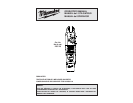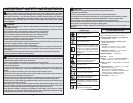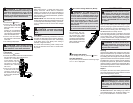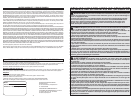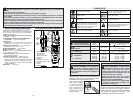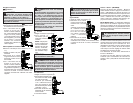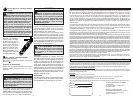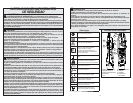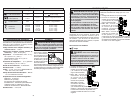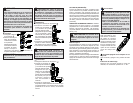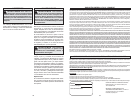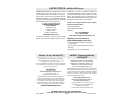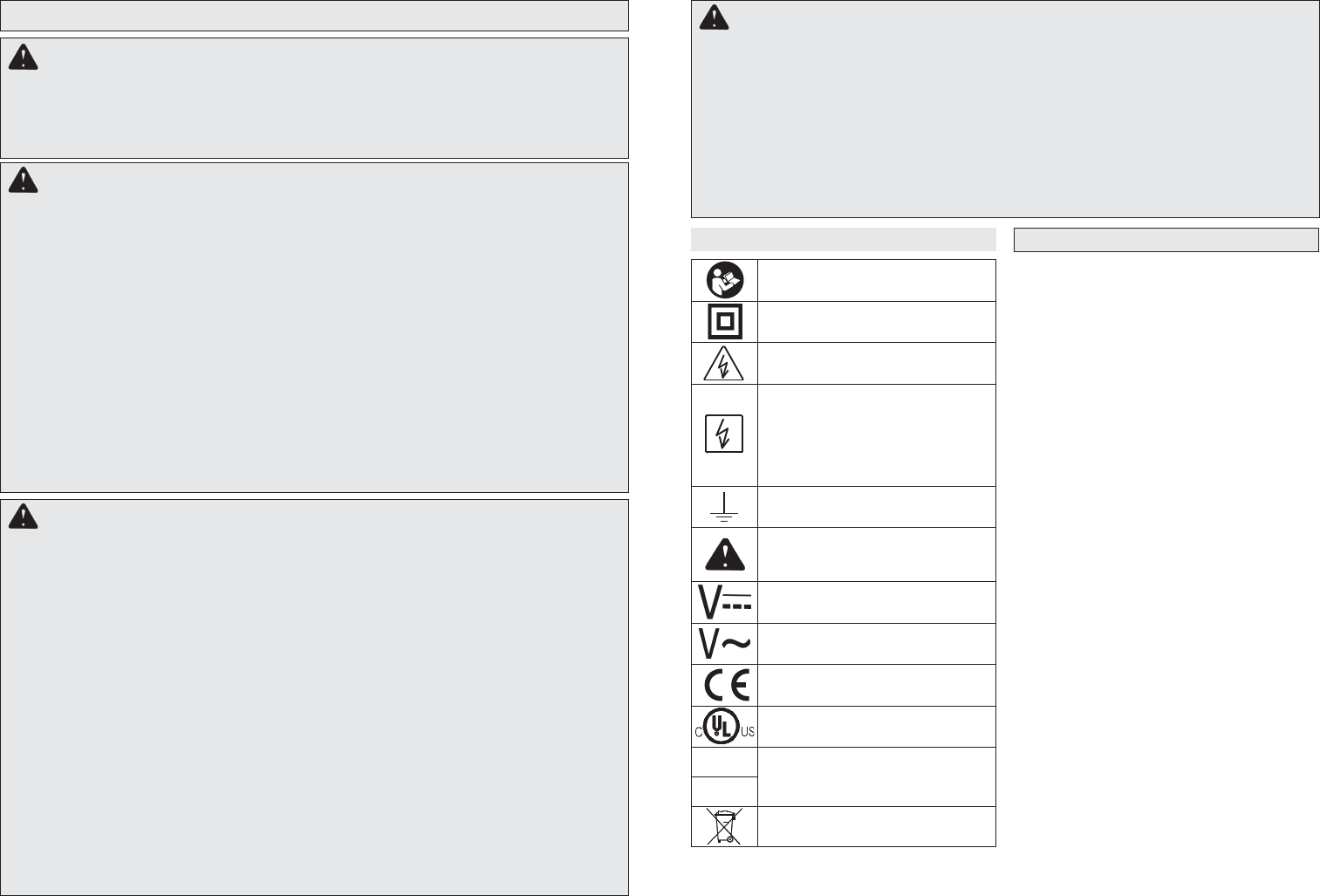
2
3
IMPORTANT SAFETY INSTRUCTIONS
Symbology
WARNING READ ALL SAFETY WARNINGS AND INSTRUCTIONS.
Failure to follow the warnings and instructions may result in electric shock, fi re and/or
serious injury, as well as instrument damage and/or damage to the equipment being tested.
Save these instructions - This operator’s manual contains important safety and operating
instructions for the MILWAUKEE Fork Meters. Before using, read this operator’s manual,
your battery pack and charger operator’s manual, and all labels on the battery pack, charger
and Fork Meters.
DANGER
Never make measurement on a circuit in which voltage over AC1000V exists. Use only leads
rated 1000V or better.
Do not attempt to make measurement in the presence of fl ammable gases. Otherwise, the use
of the instrument may cause sparking, which can lead to an explosion.
Never attempt to use the instrument if its surface or your hand is wet.
Do not exceed the maximum allowable input of any measuring range.
Only test on unenergized circuits unless absolutely necessary.
Check tool functionality on a known circuit fi rst. Never assume tool is working. Assume circuits
are live until they can be proven de-energized.
Do not ground yourself while measuring. Avoid body contact with earthed or grounded sur-
faces such as pipes, radiators, ranges and refrigerators.
Never open the Battery cover during a measurement.
This instrument is to be used only in its intended applications or conditions. Otherwise, the
instrument's safety functions may not work, resulting in serious personal injury and instru-
ment damage.
To reduce the risk of injury from shock and arc blasts, always wear personal protective
equipment where live conductors are exposed.
WARNING
Never attempt to make measurement if any abnormal conditions, such as broken case and
exposed metal parts are found on the instrument.
Do not rotate the Rotary Dial while the test leads are being connected.
Verify proper operation on a known source before use or taking action as a result of the indi-
cation of the instrument.
Do not install substitute parts or make any modifi cation to the instrument. For repair or re-
calibration, return the tool to a factory Service/Sales Support Branch or authorized service
station.
Do not try to replace the battery pack if the surface of the instrument is wet.
Disconnect all the cords and cables from the object under test and power off the instrument
before removing or inserting the battery pack.
Recharge only with the charger specifi ed by the manufacturer. A charger that is suitable for
one type of battery pack may create a risk of fi re when used with another battery pack.
Use the meter only with specifi cally designated battery packs. Use of any other battery packs
may create a risk of injury and fi re.
When battery pack is not in use, keep it away from other metal objects like paper clips, coins,
keys, nails, screws, or other small metal objects that can make a connection from one terminal
to another. Shorting the battery terminals together may cause burns or a fi re.
Under abusive conditions, liquid may be ejected from the battery, avoid contact. If contact
accidentally occurs, fl ush with water. If liquid contacts eyes, additionally seek medical help.
Liquid ejected from the battery may cause irritation or burns.
CAUTION
Set the Dial to an appropriate position before starting measurement.
Firmly insert the test leads.
Disconnect the test leads from the instrument for current measurement.
Do not expose the instrument to the direct sun, high temperature and humidity or dewfall.
Altitude 2000m or less. Appropriate operating temperature is within -10ºC and 50ºC.
This instrument isn’t dust & water proofed. Keep away from dust and water.
Be sure to power off the instrument after use. When the instrument will not be in use for a long
period, place it in storage after removing the battery pack.
Use a damp cloth or neutral detergent for cleaning the instrument. Do not use abrasives or
solvents.
Read Operator’s Manual
Double insulation
Risk of electric shock
Indicates that this instrument can
clamp on bare conductors when
measuring a voltage correspond-
ing to the applicable measurement
category, which is marked next to
this symbol.
Earth
Danger, Warning, or Caution -
Consult the operators manual for
additional safety information.
Volts Direct Current
Volts Alternating Current
European Conformity Mark
Underwriters Laboratories, Inc.,
United States and Canada
Cat III
Classifi cation of transient overvolt-
ages, based on nominal line voltage
to earth.
Cat IV
Do not dispose of this product as
unsorted municipal waste.
Accuracy is specifi ed for 1 year after calibration, at
operating temperatures of 18°C to 28°C (64°F to
82°F), with relative humidity at 0 % to 85 %.
Maximum voltage between any terminal and
earth ground.... 1000 V
Jaw Opening (maximum conductor size) ....
approx. 5/8” (16 mm)
Temperature ....
Operating: -10°C to 50°C (14°F to 122°F)
Storage: -40°C to 60 °C (-40°F to 140°F)
Temperature Coeffi cient .... 0.1 x (specifi ed
accuracy)/°C (<18°C or >28°C)
Operating Altitude.... 2,000 meters
Drop Test .... 1 Meter
Voltage .... 12 DC Li-Ion, MILWAUKEE Battery
Pack Cat. Nos. 48-11-2401, 48-11-2402
Battery run time .... Greater than 12 hrs with all
functions
Safety Compliances .... EN61010-1, UL 61010-1,
EN61010-031 (Probes),
IEC 61010-2-32 (Clamp Assemblies),
IEC/EN 61010-1 2nd Edition for measurement
Category IV 600V, Category III 1000V,
Pollution Degree 2, EMC EN61326-1
Certifi cations .... cULus, CE
General Specifi cations



